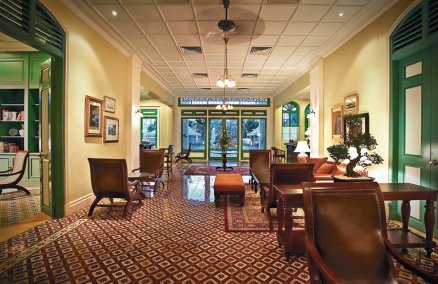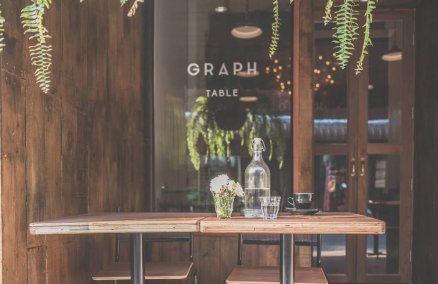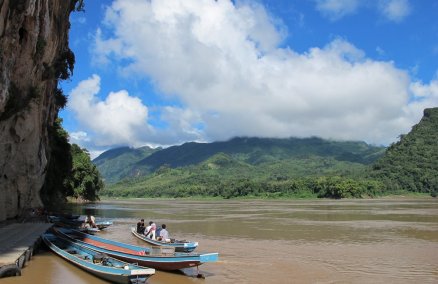Kanchanaburi is back in the headlines again with the recent Hollywood release of The Railway Man, a film based on the bestselling autobiography by Eric Lomax, a British POW who was put to work on the infamous death railway during WWII. The town hosted its annual River Kwai Bridge Festival last month, but there are many other ways you can explore Kanchanaburi’s fascinating past.
War Memorials
Upon arriving in Kanchanaburi, you will be confronted with many reminders of World War II. Firstly, there are several museums you can visit. Start with the JEATH War Museum (Chaichumphol Alley, open daily 8:30am-4:30pm, B10 for Thais and B30 for foreigners) at Wat Chaichumpolchanasongkhram, or Wat Tai as locals call it. Founded by the abbot of the temple, this u-shaped one-storey bamboo shack is intended to resemble the shelters where prisoners of war (POW) from England, Australia and Holland were forced to live while building the Thai-Burma railway for the Japanese Army. Inside are various photos and paintings detailing their plight, as well as everyday items. JEATH takes its name from each of the countries involved in the construction of the death railway: Japan, England, Australia, Thailand and Holland.
Another similar exhibition can be found at the World War II & JEATH War Museum (Maenamkwai Road, open daily 8am-5pm, B40, 034-512-596, 034-513-478), which is near the River Kwai Bridge. Here things go into considerably more detail with quite eerie touches like an old Japanese army locomotive, old guns, sculptures of WWII world leaders and skeletons believed to be POWs’ displayed in a dark room of a temple-like building. In the next wall, it is home to Japanese cemetary which is always visited by Japanese families and officials annually.
Perhaps the most informative museum, the Thai-Burma Railway Centre (next to Don Rak Cemetery on Saeng-Chuto Road, open daily 9am-5pm, B120, 034 512-721, www.tbrconline.com) offers well-designed exhibitions covering the construction of the railway as well as the post-war situation, including models, video and dioramas.
Another option is Hellfire Pass Memorial Museum (open Mon-Sat 9am-4pm, free), which specifically explores the brutal conditions of the eponymous railway cutting here. Apart from the exhibition, you can also take a 15-minute trek down to Chong Khao Khad, aka Hellfire Pass.
One other famous stop is Don Rak Cemetery or Kanchanaburi Allied War Cemetery on Saeng-Chuto Road. You can also visit Chungkai War Cemetery, the site of the original POW camp and hospital during WWII. Though the war has been over for more than 60 years, these two cemeteries are still often visited and not just by surviving POWs. “I recently met a family from the UK who came to visit Don Rak cemetery as their relative was buried there. During their stay, the grandson visited the cemetery to lay flowers and sat next to his grandfather’s grave for 30 minutes every day. He never met his granddad but the connection is still strong,” says Michael Newbatt, Manager of the Commonwealth War Graves Commission in Thailand.
Historic Road
Apart from all the museums, there are more lively ways to dive head-first into Kanchanaburi’s history, like heading to Pakprak Road to visit the 170-year-old community there. Once you reach this road, the first thing you will notice are the beautiful century-old buildings. Each building has a sign detailing its special history and unique design. This road was once a dense commercial area, so the Japanese army came here to do business during their occupation. Here, you can learn about the extraordinary story of a merchant named Boonpong Sirivejjabhandu, who risked his life to secretly help POWs stationed in the area. “He joined with Sir Ernest Edward Dunlop, a POW at the camp, to smuggle in medicines and food, and lend money without knowing whether he would ever get it back. His wife was totally against these actions as she feared what would happen if the authorities found out. But then she saw how bad the POWs had it,” Boonpong’s sister-in-law Lamyai Sirivejjabhandu explains. “His courage has been widely honored by POWs, especially the Australians and English, but sadly very few Thais know his story.” Today, there is a small exhibition devoted to the heroic acts of Boonpong in an old building named Siri Osot (สิริโอสถ).
This nostalgic road is also home to beautiful cafés sat in century-old structures. First stop is Baan Sitthisang (141 Sitthisan House, Pakprak Road, open daily 8am-6pm, 034-514-514), a colonial-style house turned retro café that occasionally hosts small art workshops at the weekend. Another worth a visit is Hua Hong Coffee (154 Pakprak Road, open daily 8am-6pm, 034-511-577), which is decorated in a colorful Chinese-Viet style including vibrant flower-print chairs. Their treats include homemade brownies and banana chocolate chip muffins. The best way to take in this street is by cycling, easily done by renting a ride at one of the many neighborhood bike shops.
Train Hopping
One image forever associated with Kanchanaburi is of a train on a wooden bridge right by the River Kwai. In order to capture that iconic moment yourself, you’ll have to plan your trip carefully to reach to the scenic spot of Krasae Cave. You can start by catching a train at Thonburi Station in Bangkok at either 7:45am (train No. 257) or 1:55pm (train No.259). Last stop is Nam Tok Station at Sai Yok Noi Waterfall but you need to hop out at Tham Krasae Bridge Station to take the famous shot of the train running along the cliff and the river. Travel is free for Thai citizens and B100 for foreigners. If you go by car, you can simply drive to Krasae Cave—just make sure to time your arrival to coincide with the train’s.
Essentials
Memorial Services
There are two annual memorial services at Kanchanaburi Allied War Cemetery, the Remembrance Service held by the Royal British Legion on Nov 11 and Anzac Day held by the Australian Embassy on April 25. The Anzac event also includes a moving dawn service at Hellfire Pass Memorial Museum.
Where to Stay
U Inchantree Kanchanaburi Hotel (443 Mae Nam Kwai Road, 034-521-584, 086-368-7014, http://bit.ly/1dxN8Ge). Room rates start at B3,000 for a superior room.
Dheva Mantra Resort and Spa (9/99, Tha Makham district, 034 527-666, www.dhevamantra.com) at B4,500 for superior room.
How to get there
By car
From Bangkok, take Highway No.4 (Phetkasem Road) before turning onto Highway 323 at Ban Pong district and then drive until you reach Kanchanaburi.
By train
From Thonburi Station catch train No. 257 at 7:45am or train No. 259 at 1:55pm. Return trains from Kanchanaburi Station leave at 7:11am and 2:37pm.





















